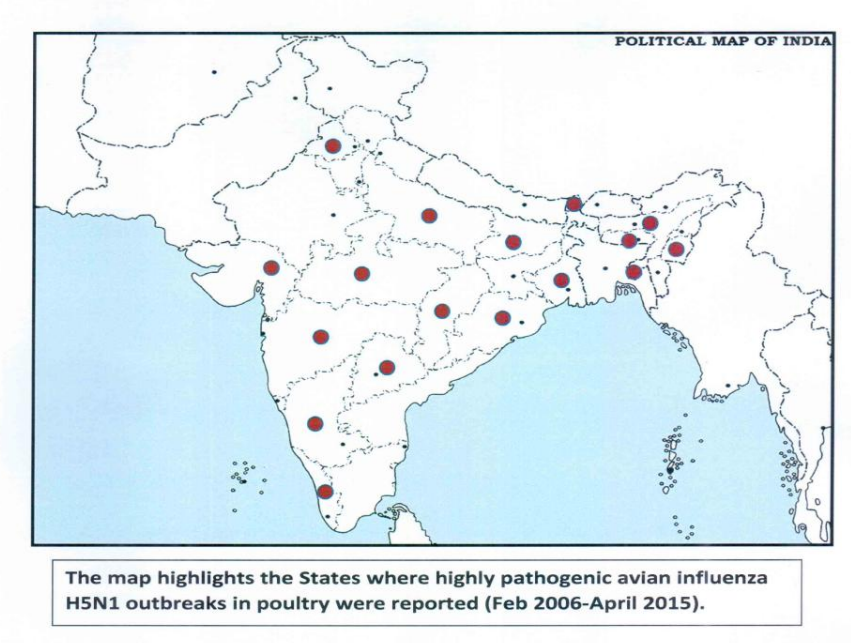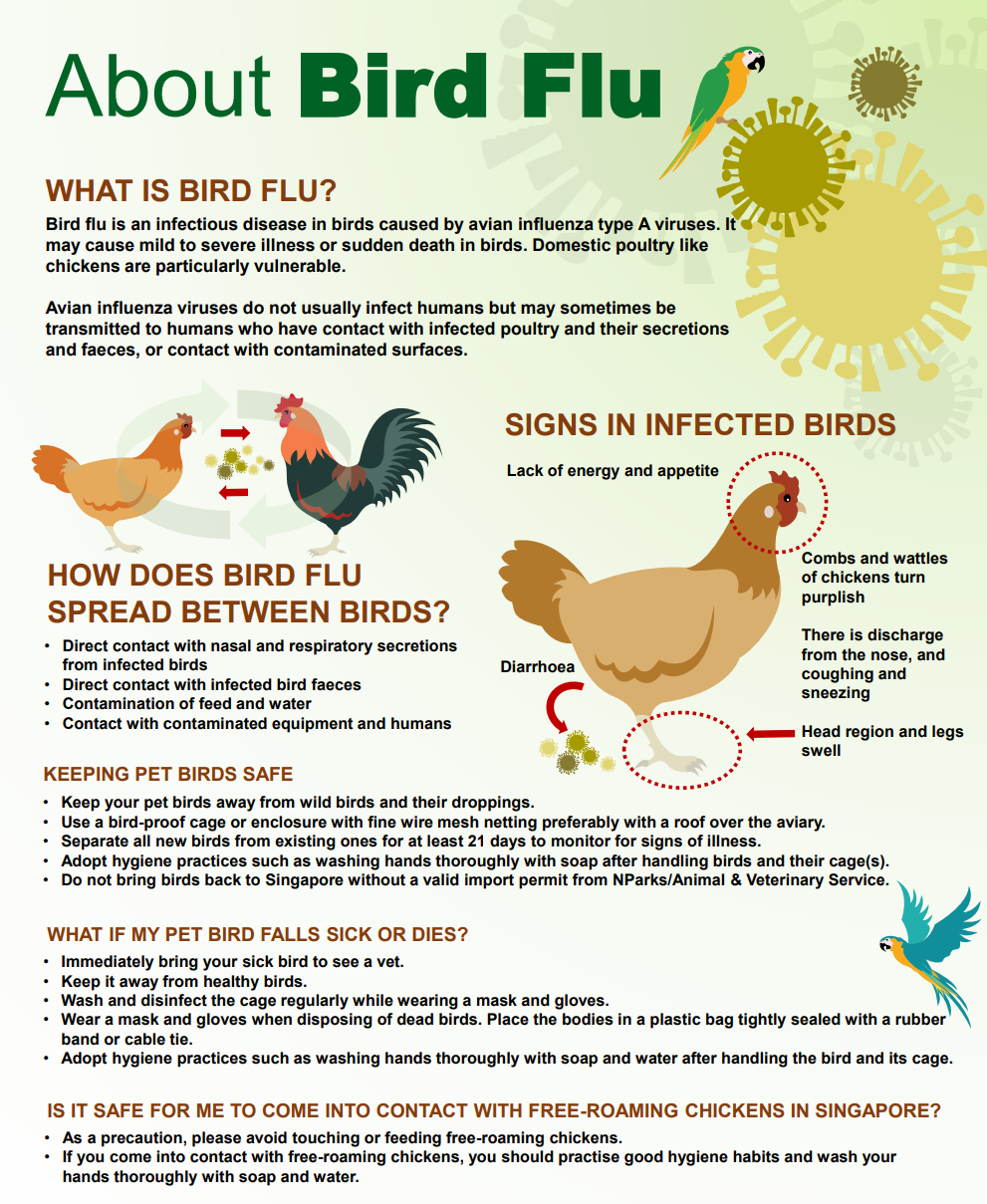Important Facts For Prelims
H5N1 Bird Flu
- 29 Mar 2024
- 3 min read
Why in News?
H5N1 bird flu, a highly pathogenic virus, has been spreading globally, posing a significant threat to birds and wildlife.
What is H5B1 Bird Flu?
- Background:
- Avian influenza A(H5N1) or H5B1 Bird Flu is a highly pathogenic virus that primarily circulates among birds but can infect mammals.
- H5N1 originated from a virus outbreak in China in 1996 and rapidly evolved into a highly pathogenic strain.
- Since 2020, it has spread across Europe, Africa, Asia, North America, South America, and even mainland Antarctica.
- India experienced the first H5N1 outbreak in the State of Maharashtra and Gujarat in 2015.
- Impact on Animals:
- Wild birds, including endangered species like California condors, have been severely affected by H5N1.
- The main species affected used to be chicken.
- Marine mammals, such as sea lions and dolphins, have suffered mass deaths in regions like Chile and Peru.
- Mammals like foxes, pumas, bears in North America, and farmed minks in Spain and Finland, have also been infected.
- Human Risk and Spread Factors:
- While rare, humans can contract bird flu, primarily through contact with infected birds.
- Climate change may exacerbate the spread of the virus, altering bird behaviour and increasing interactions between bird species.
- World Health Organization (WHO) Risk Assessment:
- While the virus does not easily infect humans, sporadic cases continue to occur, mainly linked to poultry exposure.
- Human-to-human transmission remains rare, but the potential for further cases exists, particularly in regions where the virus is endemic in poultry.
- WHO assesses the overall risk to the general population as low but emphasises the importance of surveillance and risk management.
- Preventive Measures and Recommendations:
- WHO advises the public to avoid high-risk environments like live animal markets and practise good hand hygiene.
- Prompt reporting of sick animals and avoiding consumption of sick poultry are recommended.
- Individuals exposed to infected birds or environments should seek medical care promptly.
UPSC Civil Services Examination, Previous Year Question (PYQ)
Prelims
Q. H1N1 virus is sometimes mentioned in the news with reference to which one of the following diseases? (2015)
(a) AIDS
(b) Bird flu
(c) Dengue
(d) Swine flu
Ans: (d)
Q. Which of the following statements is/are correct? Viruses can infect (2016)
- bacteria
- fungi
- plants
Select the correct answer using the code given below:
(a) 1 and 2 only
(b) 3 only
(c) 1 and 3 only
(d) 1, 2 and 3
Ans: (d)






